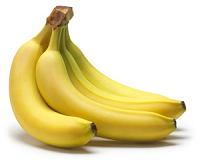 |
Anaheim CA (SPX) Mar 29, 2011 With billions of pounds of meat and bone meal going to waste in landfills after a government ban on its use in cattle feed, scientists described development of a process for using that so-called meat and bone meal to make partially biodegradable plastic that does not require raw materials made from oil or natural gas. They reported the results at the 241st National Meeting and Exposition of the American Chemical Society (ACS). Fehime Vatansever and colleagues explained that in 1997, the U. S Food and Drug Administration banned the decades-old practice of feeding meat and bone meal (MBM) made from byproducts of slaughtered cattle, sheep, and farmed deer, elk and bison to those same animals. Other countries took similar action. It stemmed from concern over the human form of Mad Cow Disease, a very rare but fatal brain disorder that spread in the United Kingdom from eating infected meat. As of 2010, only three cases of the disease, bovine spongiform encephalopathy (BSE), had occurred in the United States. The bans were to reduce the chances that meat and bone meal made from one infected cow could spread BSE widely throughout cattle herds. "The ban changed what once was a valuable resource - a nutritious component of cattle feed - into waste disposal headache," Vatansever said. "More than nine billion pounds of protein meal are produced by the U.S. rendering industry each year, and most of that is meat and bone meal. "The meal from cows had to be treated with harsh chemicals to destroy any BSE and then put into special landfills. We thought we could keep meat and bone meal from being deposited in landfills by using it to make petroleum-free bioplastics." Vatansever and her colleagues described development and successful testing of that process, which uses meat and bone as the raw material rather than the chemical compounds in petroleum or natural gas. They mixed the MBM plastic with so-called ultra-high-molecular weight polyethylene (UHMWPE), an extremely tough plastic used in skis, snowboards, joint replacements, PVC windows, and other products. Their tests showed that the MBM/UHMWPE plastic is almost as durable as UHMWPE with the bonus of being partially biodegradable. Any of the BSE infectious agents that might be present in meat and bone meal are deactivated during the manufacture of the plastic, Vatansever noted. "This is just one way to reuse meat and bone meal, and it's great because it reduces the amount of petroleum needed to make plastics," Vatansever said. "We've also managed to create a strong, sustainable material that is easy to manufacture."
Share This Article With Planet Earth
Related Links American Chemical Society Bio Fuel Technology and Application News
 Green Cars Could Be Made From Pineapples And Bananas
Green Cars Could Be Made From Pineapples And BananasAnaheim CA (SPX) Mar 29, 2011 Your next new car hopefully won't be a lemon. But it could be a pineapple or a banana. That's because scientists in Brazil have developed a more effective way to use fibers from these and other plants in a new generation of automotive plastics that are stronger, lighter, and more eco-friendly than plastics now in use. They described the work, which could lead to stronger, lighter, and more ... read more |
|
| The content herein, unless otherwise known to be public domain, are Copyright 1995-2010 - SpaceDaily. AFP and UPI Wire Stories are copyright Agence France-Presse and United Press International. ESA Portal Reports are copyright European Space Agency. All NASA sourced material is public domain. Additional copyrights may apply in whole or part to other bona fide parties. Advertising does not imply endorsement,agreement or approval of any opinions, statements or information provided by SpaceDaily on any Web page published or hosted by SpaceDaily. Privacy Statement |